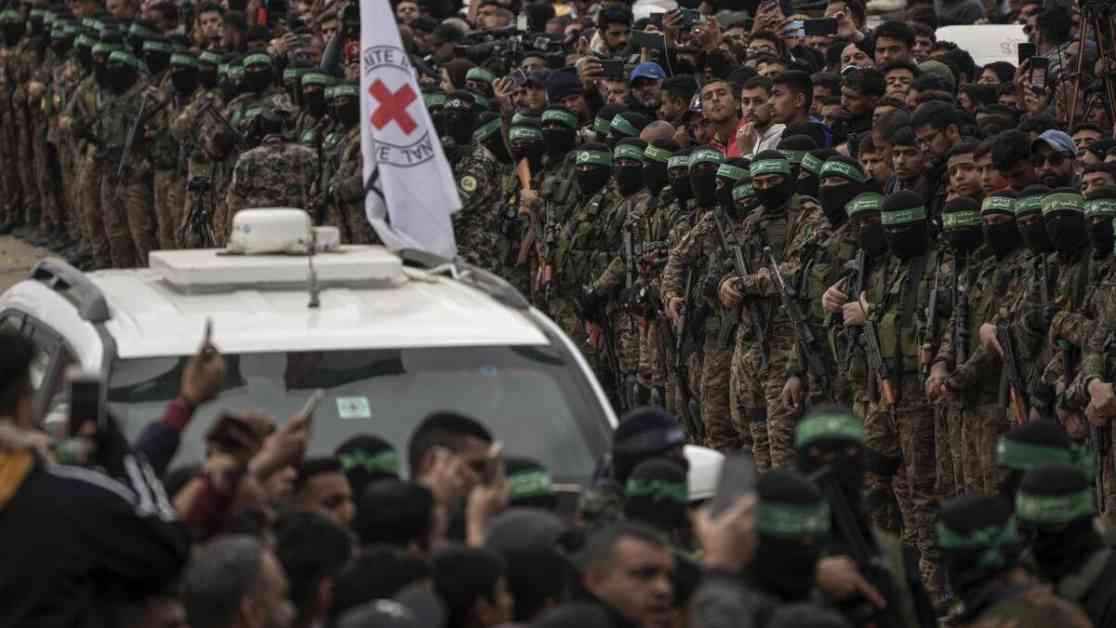The recent events in Gaza have captured the attention of the world, showcasing the ongoing conflict between Hamas and Israel. As the cease-fire agreement is being negotiated, both parties are vying to emerge as victors in this brutal war that has left Gaza in ruins.
Strategic Messaging Through Hostage Handovers
Over the past weekend, Hamas staged a powerful display by parading a group of Israeli hostages who had been held captive for over a year. This symbolic gesture not only marked their release but also served as a platform for Hamas to taunt Israeli Prime Minister Benjamin Netanyahu. With a banner that read “Total victory” in Hebrew, Hamas aimed to mock the Israeli leader’s assertions of triumph throughout the prolonged warfare.
The elaborate theatrics during the hostage handovers, complete with masked fighters and propaganda banners, have been a notable tactic employed by Hamas to assert its relevance and strength. Through these carefully orchestrated events, Hamas seeks to convey a message of resilience and defiance in the face of Israeli aggression.
Political Ramifications and Regional Dynamics
The aftermath of the cease-fire has led to a flurry of diplomatic engagements, with President Trump and Netanyahu emphasizing a united front against Hamas. However, Trump’s unexpected declaration of U.S. ownership over Gaza and plans for resort-style developments have sparked controversy and raised concerns about the future of the region. This bold stance sends a clear message to Hamas regarding the consequences of defying international expectations.
As tensions continue to simmer, both Hamas and Israel are navigating complex negotiations to define the terms of the cease-fire and address critical issues such as prisoner exchanges and territorial control. The delicate balance of power in Gaza hangs in the balance, with Hamas striving to maintain its influence and Israel seeking to ensure its security in the region.
Humanitarian Concerns and Public Sentiment
Amidst the political maneuvering and strategic calculations, the human toll of the conflict remains a stark reality. The devastating impact of the war on Gaza’s civilian population, coupled with the visible suffering of prisoners and detainees, has reignited calls for accountability and justice. Human rights groups have raised alarms about the mistreatment and neglect faced by individuals on both sides of the conflict, underscoring the urgent need for compassion and solidarity in the midst of turmoil.
As public opinion hardens on both sides, the emotional resonance of the hostage releases has elicited a range of reactions, from joy to outrage. The poignant scenes of freed hostages and their harrowing ordeals serve as a stark reminder of the human cost of war and the imperative of seeking peaceful resolutions to conflict.
In conclusion, the cease-fire agreement in Gaza marks a critical juncture in the ongoing struggle for power and legitimacy in the region. As Hamas and Israel navigate the complexities of post-war negotiations, the stakes remain high, and the path to lasting peace is fraught with challenges and uncertainties. The world watches with bated breath as these pivotal developments unfold, hoping for a resolution that will bring relief to the people of Gaza and pave the way for a more stable future.


